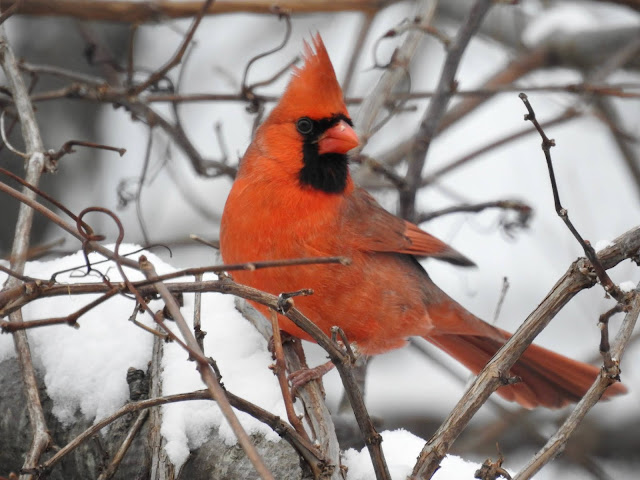A gargantuan sycamore arches over the Olentangy River at Highbanks Metro Park/Jim McCormac
January 20, 2019
NATURE
Jim McCormac
... just as we came to the hills, we met with a sycamore ... of a most extraordinary size, it measuring ... forty-five feet round …
George Washington described an enormous sycamore tree that he encountered on his 1770 expedition to the Ohio River Valley. Such gargantuan trees were commonplace in those days. Hollow specimens were sometimes used as temporary dwellings. A particularly notable tree was along the Scioto River in Pike County. Its hollowed base was long used as a blacksmith shop.
Although a few sylvan colossi (giant trees) can still be found, there are far fewer than in Washington’s day. The largest known extant Ohio sycamore is in Ashland County, and it’s a whopper: 36 feet in girth, 124 feet in height and a crown spread of 88 feet.
The sycamore is a classic riparian tree, lining the banks of streams. Pale-white trunks, spackled with a patchwork of flaky brown bark, makes identification easy. The trees stand out especially well in winter when there are no leaves to mask the ghostly trunks.
The sycamore is a classic riparian tree, lining the banks of streams. Pale-white trunks, spackled with a patchwork of flaky brown bark, makes identification easy. The trees stand out especially well in winter when there are no leaves to mask the ghostly trunks.
Central Ohioans are fortunate to live in proximity to many exceptional streams, and sycamores are common along all of them. An especially noteworthy sycamore conservatory is a stretch of the Olentangy River from Interstate 270 north through Highbanks Metro Park. This watery avenue of the giants boasts scores of big trees.
I made the accompanying image at Highbanks, and walking the Scenic River Trail or hiking the Overlook Trail to the observation deck will offer views of many impressive sycamores. Bald eagles have built a magnificent nest in a huge sycamore, and it can be seen from the deck.
As wildlife trees go, it’s hard to top a sycamore. Barred and great horned owls nest in their cavities. Myriad songbirds forage among the branches. One of them, the yellow-throated warbler, is so tightly wedded to this tree that it was formerly named the sycamore warbler.
Scores of vegetarian insects feast on sycamore foliage. A number of them are obligate specialists — they can feed only on sycamores. Two such moths, the drab prominent and sycamore tussock moth, have especially striking caterpillars.
Because of the bounty of valuable bugs produced by sycamores, migrant birds flock to the trees. It is possible that the huge tree in the photo has graced nearly 100 species of birds in its boughs, attracted by food, shelter or its utility as a perch.
As if to reinforce the tree’s avian value, a giant pileated woodpecker landed on a snag high in the tree’s crown while I took the photo.
Sycamores lord over a host of riverside trees: our namesake Ohio buckeye, silver maple, cottonwood, box elder and others. Their collective root systems form a subterranean snarl that holds soil in place and prevents erosion. Overarching branches shade and cool water, creating a healthier environment for fish and other aquatic life.
Trees help protect our waterways from terrestrial pollution, filtering contaminants out before they reach the water. Many streams in heavily agricultural regions have been transformed into treeless ditches that shunt pesticides and fertilizers downstream with great rapidity. Decimating riparian forests is a major contributor to the ongoing plague of toxic algae in Lake Erie and other waterbodies.
Protecting bottomland forests and the sycamores that come with them is one of the greatest boons to conservation and human health that we can do.
Naturalist Jim McCormac writes a column for The Dispatch on the first, third and fifth Sundays of the month. He also writes about nature at www.jimmccormac.blogspot.com.

















































